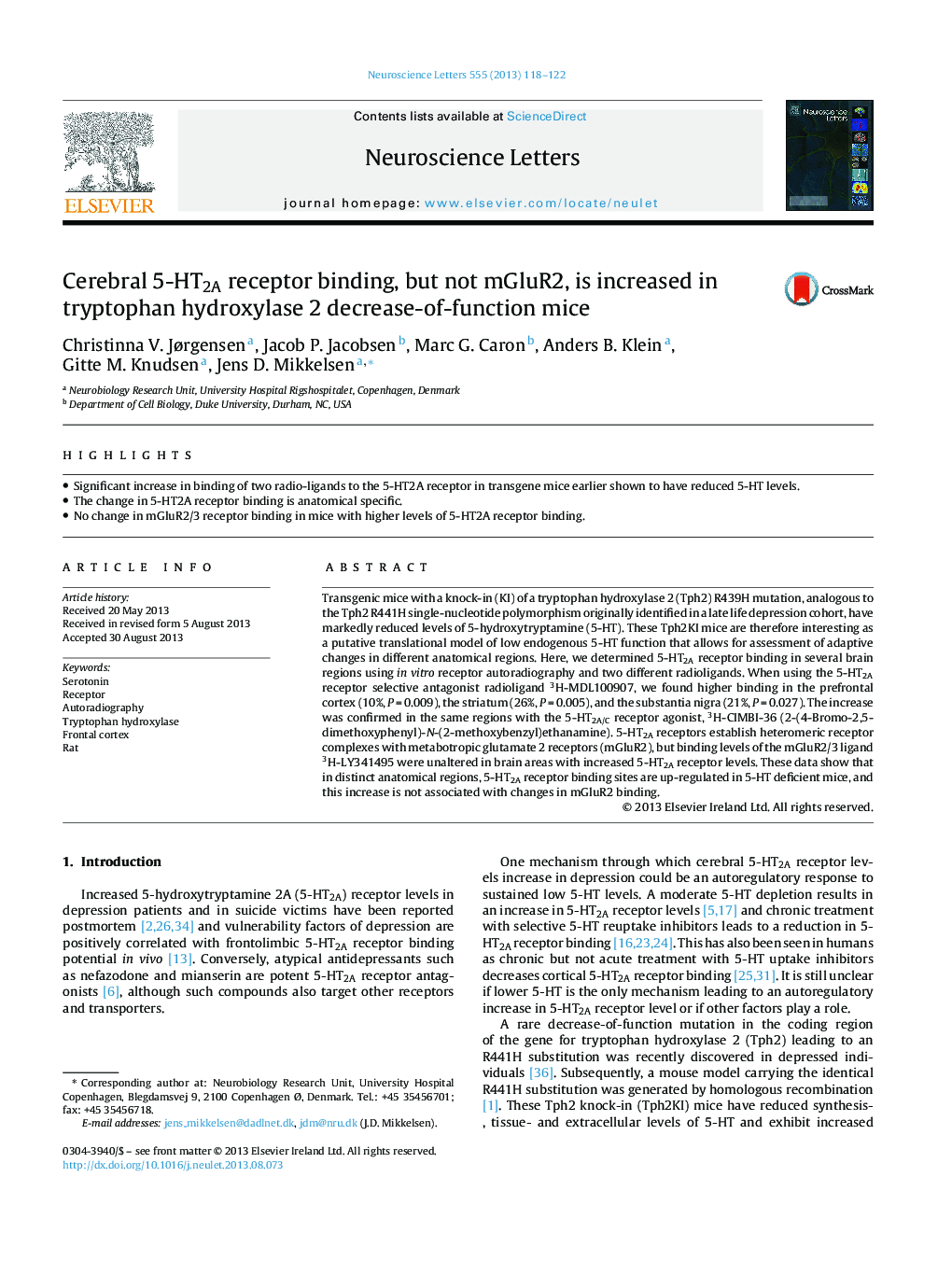| Article ID | Journal | Published Year | Pages | File Type |
|---|---|---|---|---|
| 4343917 | Neuroscience Letters | 2013 | 5 Pages |
•Significant increase in binding of two radio-ligands to the 5-HT2A receptor in transgene mice earlier shown to have reduced 5-HT levels.•The change in 5-HT2A receptor binding is anatomical specific.•No change in mGluR2/3 receptor binding in mice with higher levels of 5-HT2A receptor binding.
Transgenic mice with a knock-in (KI) of a tryptophan hydroxylase 2 (Tph2) R439H mutation, analogous to the Tph2 R441H single-nucleotide polymorphism originally identified in a late life depression cohort, have markedly reduced levels of 5-hydroxytryptamine (5-HT). These Tph2KI mice are therefore interesting as a putative translational model of low endogenous 5-HT function that allows for assessment of adaptive changes in different anatomical regions. Here, we determined 5-HT2A receptor binding in several brain regions using in vitro receptor autoradiography and two different radioligands. When using the 5-HT2A receptor selective antagonist radioligand 3H-MDL100907, we found higher binding in the prefrontal cortex (10%, P = 0.009), the striatum (26%, P = 0.005), and the substantia nigra (21%, P = 0.027). The increase was confirmed in the same regions with the 5-HT2A/C receptor agonist, 3H-CIMBI-36 (2-(4-Bromo-2,5-dimethoxyphenyl)-N-(2-methoxybenzyl)ethanamine). 5-HT2A receptors establish heteromeric receptor complexes with metabotropic glutamate 2 receptors (mGluR2), but binding levels of the mGluR2/3 ligand 3H-LY341495 were unaltered in brain areas with increased 5-HT2A receptor levels. These data show that in distinct anatomical regions, 5-HT2A receptor binding sites are up-regulated in 5-HT deficient mice, and this increase is not associated with changes in mGluR2 binding.
